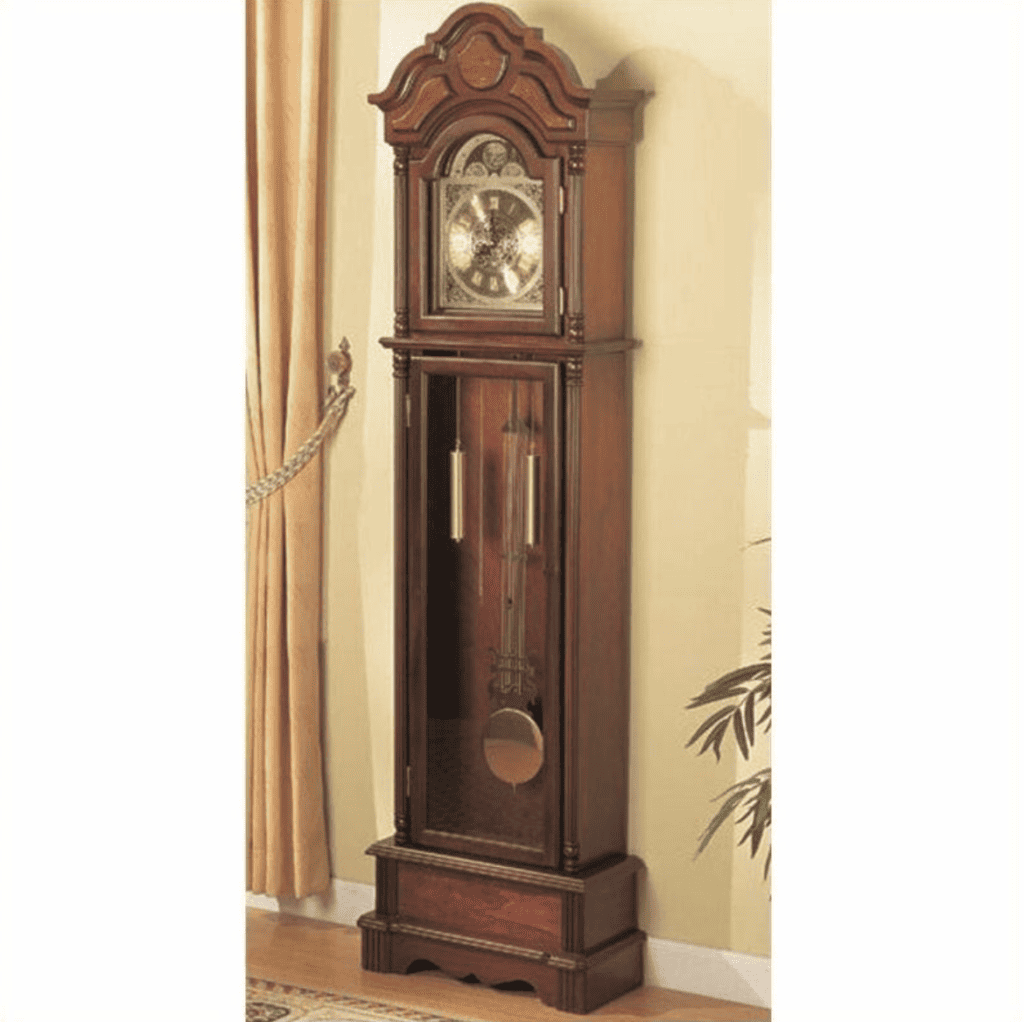A grandfather clock, while a beautiful collectible, shouldn’t only serve as just another piece of furniture. It’s important that it also keep time accurately as it is a clock after all! Because of the vast amount of our current technology, you may be wondering about the accuracy of grandfather clocks, seeing how many of them have antique mechanisms (including modern versions).
Grandfather clocks are extremely accurate and can keep time to within one minute of each month.The unique inner mechanisms of grandfather clocks allow for this accuracy, and this type of mechanism has been a part of grandfather clockmaking since at least the 16th century.
We’ll explore the unique mechanisms that make grandfather clocks some of the most accurate time pieces you’ll find, and we’ll discuss a bit of the history that led to the creation of this technology several centuries ago.

What Makes Grandfather Clocks Accurate?
One reason grandfather clocks are so accurate is that they employ the use of a pendulum for keeping time (Source). Pendulums swing from side to side in exactly one second. Clocks with pendulums have been used for at least 300 years and are still considered the most accurate mechanisms in timekeeping. Over the years, pendulum mechanisms have been modified from their original state in a variety of ways.
In 1671, English clockmaker William Clement invented an “anchor escapement using a ‘seconds’ pendulum that made grandfather clocks more practical” (Source). The invention of the escapement is widely attributed to clockmaker William Clement, but some sources claim that it was most likely invented by British scientist Robert Hooke. A seconds pendulum is 39 inches in length.
This technology was slightly updated in 1715 when George Graham created a “dead beat escapement” that extended the pendulum and improved timekeeping accuracy. In the 17th century, grandfather clocks were further improved by the invention of the 8-day movement. More space in the clock case was added to ensure the weights could drop fully for 8 days without adding extra wheels to the movement.
This was when the bob, or disc on the end of a pendulum, was added. This allows the pendulum to swing freely from side to side and uses the force of gravity to aid in accurate timing.
The Technology Behind Grandfather Clocks:
If you’re interested in the history of grandfather clocks, be sure to view the article about why we call these types of clocks grandfather clocks. In this next passage, we’ll focus on the engineering that has allowed these clocks to withstand the test of time through several centuries.
A grandfather clock has four parts internally that control each hand on the clock’s face: an escapement gear, weights, gears, and a setting mechanism (Source). These four parts are essential for the clock to function and all work together brilliantly to provide an accurate time keeping system.
The escapement, or anchor escapement, is used in clocks with a pendulum (Source). The anchor escapement is made of the pendulum, an anchor, and the actual escapement gear (Source). The escapement is responsible for pushing the pendulum ever so slightly to advance the clock’s wheels each time the pendulum swings. This moves the hands on the clock forward. For most modern clocks, the type of escapement used is called a deadbeat escapement which was invented by Richard Towneley circa 1675.
Weights are responsible for keeping a pendulum swinging (for an in-depth exploration of grandfather clock weights, check out our article). Weights hang from chains within the clock’s cabinet, and when the pulley swings, weights lower and transfer energy to the pendulum (Source). This keeps the pendulum swinging.
Gears in a grandfather clock are all connected and keep the escapement and weights moving together fluidly. The escapement gears are attached to a weight drum which attaches to cables or chains holding the weights (Source). This controls the minute and hour hands.
A setting mechanism in cable-driven clocks, which is the mechanism used in most grandfather clocks for setting time, can be wound by using a key or crank that sets the weights.
Why Isn’t My Grandfather Clock Keeping Time Accurately?
Sometimes there will be instances where your clock isn’t keeping time the way it should. When this happens, there are some adjustments you can make to restore the accuracy of your clock. If you have a spring driven clock, the accuracy can decrease as the spring weakens over time (Source). However, if you have a weight driven clock, you will be able to make these adjustments.
If your clock is running slowly, an adjustment can be made to the bob. Look at the bottom of the rod going through the pendulum (located under the bob) and you should find a brass nut, also called the rating nut. An original rating nut will be square, otherwise it will be round if it is a replacement. By screwing this nut to the right, the clock will run a bit faster, as tightening the nut makes the pendulum shorter. Turn the nut one full turn and then check the clock the following day to see if it is more accurate after this adjustment.
If your clock is running too fast, you can do the opposite: undo the rating nut a bit to lower the pendulum. Check this adjustment after one day also. A good phrase to remember is: “LOWER means SLOWER” (Source).
Video Resources on Grandfather Clocks
For an even deeper dive into the accuracy of grandfather clocks, keeping your grandfather clock in time consistently and the history of grandfather clocks, check out these videos I found on YouTube that are extremely interesting:
GRANDFATHER CLOCKS | How It’s Made
How to properly wind a chain-driven Grandfather Clock | ItzAnthony
TimeLine – A Brief Introduction To The History Of Timekeeping Devices
So you have a grandfather clock and it is having problems, Rochester Minnesota

